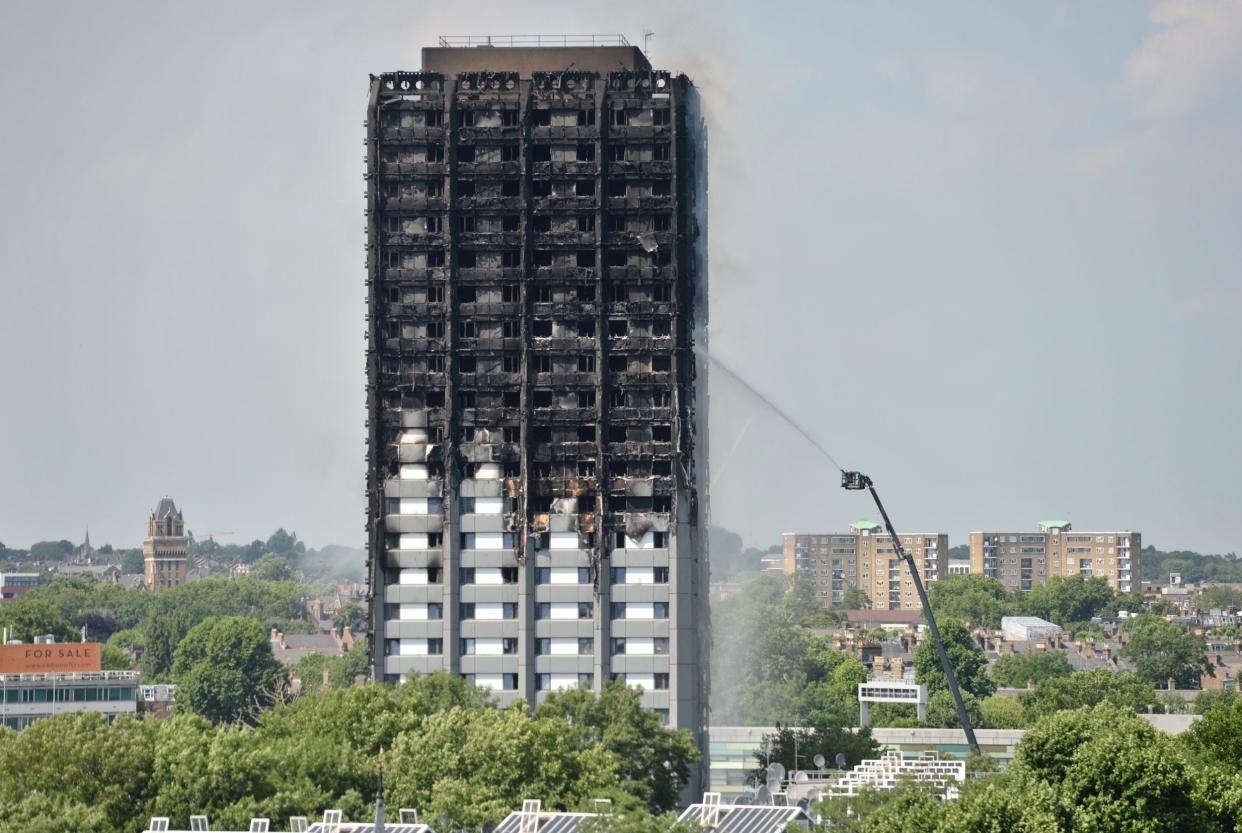Scores of tower blocks with Grenfell-style cladding have no plan in place to remove it, figures show

Scores of apartment blocks covered in the flammable cladding that encased Grenfell tower do not have plans in place to remove it, figures show.
Two and a half years after the fatal blaze in Kensington, government data reveals that more than 21,000 households are still living in flats wrapped in the Aluminium Composite Material (ACM) cladding that allowed the flames to spread so rapidly in the early hours of 14 June 2017.
The figures, published on Thursday, show that of 450 high-rise residential buildings in England found to have the combustible cladding, 315 are yet to undergo works to remove it, with 76 of these not having any plans in place to do so.
Labour’s shadow housing minister, Sarah Jones, said the fact that tens of thousands of people were still going to sleep in flammable buildings was “shameful”, adding: “With deadly tower blocks still being discovered two and a half years after Grenfell, there are serious questions about the government’s ability and willingness to fix this crisis.”
Grenfell Tower was consumed by flames after a blaze broke out in the kitchen of a fourth-floor flat, killing 72 people.
In response to the fire, the government banned the installation of combustible materials including ACM cladding in high-rise residential buildings, but the ban does not apply retrospectively to buildings that already have the panels fitted.
The process of identifying these blocks is still ongoing, with 24 private sector residential buildings awaiting confirmation of their cladding status.
All local authority housing identified as having ACM cladding – of which there were 46 owned by 15 councils – have now been remediated, according to the Local Government Association (LGA).
Lord Porter, building safety spokesman for the LGA, said that while councils had acted "swiftly", some private landlords had shown a "lack of urgency" to identify which buildings have cladding systems that have failed fire safety tests and taken steps to make them safe.
In July, the then-housing minister James Brokenshire said all private sector buildings with ACM cladding would be fixed by June 2020, a pledge branded “irresponsible and unrealistic” by London mayor Sadiq Khan.
Housing expert Stuart Hodkinson said the government's response to the Grenfell tragedy had been "too slow, too narrow, too hands-off, and too many vested interests involved".
He said private building owners without remediation plans were "putting profit before resident safety and well-being" and called on ministers to take over the buildings' management immediately, resource the remediation and work out liability afterwards.
"But these numbers of dangerous buildings only scratch the surface: the problem extends way beyond ACM cladding on residential buildings over 18 metres. We need a national emergency declaring now. It is that serious and urgent," Mr Hodgkinson added.
Responding to the figures, Grenfell United, the survivors’ and bereaved families’ group, said: “Over two and half years later, it’s obvious that the government have no intention of making people safe and are continuously dragging their feet on the matter.
“It’s only a matter of time before another tragedy happens, and the blame will lie solely at the government’s door.”
A spokesperson for the Ministry of Housing Communities and Local Government said: “Residents’ safety remains our utmost priority and it is completely unacceptable that people are having to live in buildings with unsafe ACM cladding.
“We have written to building owners to reiterate their responsibility in keeping residents’ safe and we will not hesitate to name and shame those who do not have a clear plan to safeguard their residents.”
Read more
I lost family at Grenfell and shudder at the idea of a Tory majority
Questions remain over who’s really to blame for Grenfell fire
Why isn’t Grenfell an election issue? Because politicians don’t care

 Yahoo News
Yahoo News 
